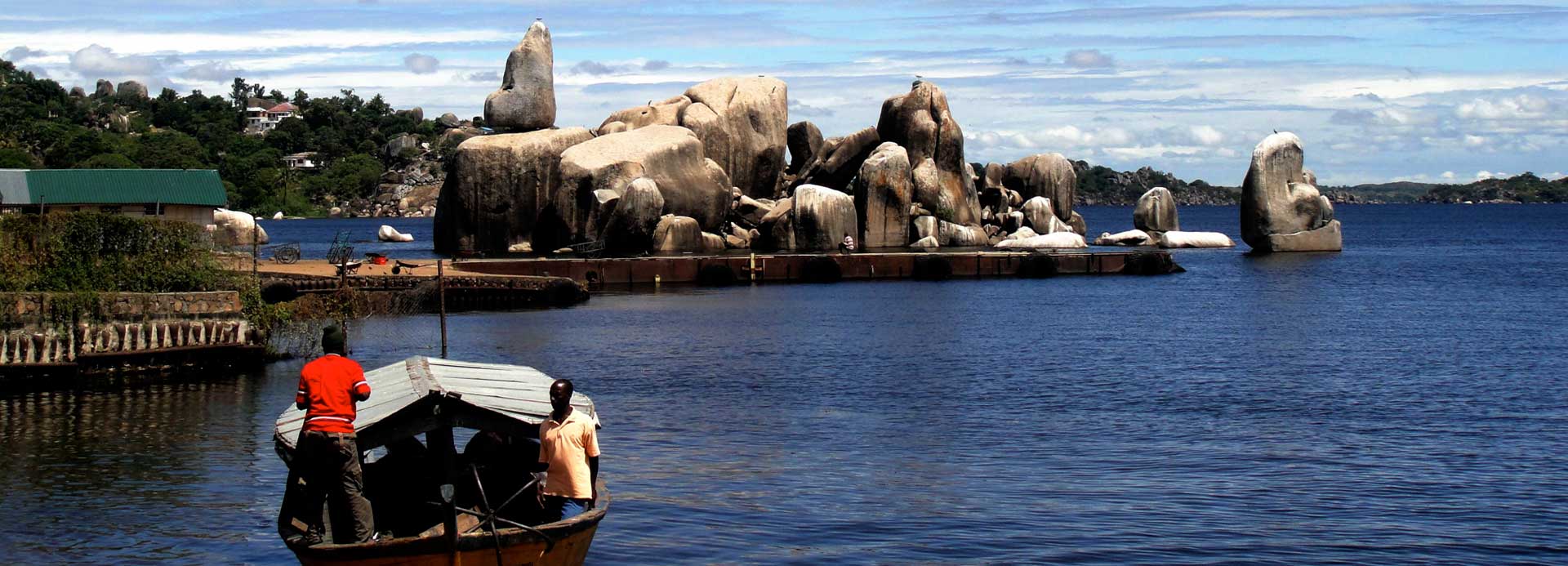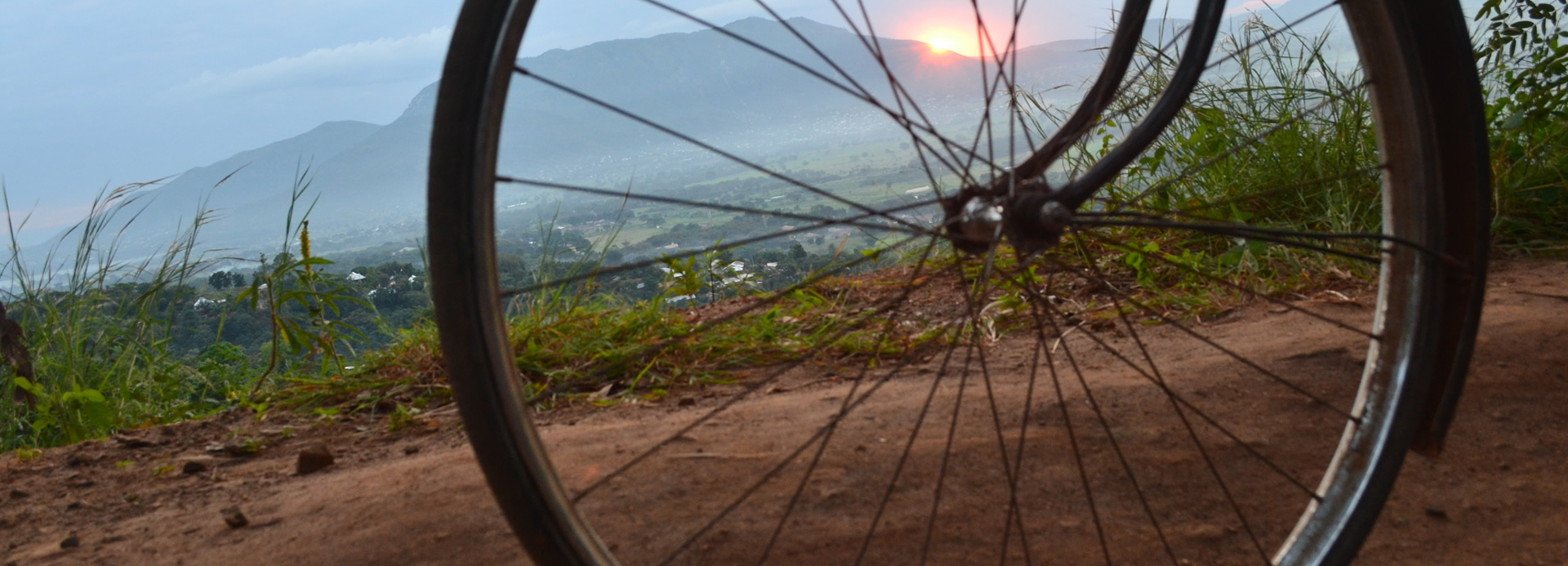Famous for containing some of the last remaining wild chimpanzees in Africa, the Mahale Mountains National Park was gazetted in 1985, covers an area of 1 613 km² and is located about 128 km south of Kigoma town on the eastern shore of Lake Tanganyika. The western boundary of the park protects an adjacent 1.6 km wide strip of Lake Tanganyika’s waters.
The land in and around Mahale is the traditional homeland of the Watongwe and Waholoholo tribes. Japanese primate researchers began exploring along the shore of Lake Tanganyika, south of Kigoma as early as 1961. In 1965, the researchers established their first
camp, ‘Kansyana’, in Mahale and began habituating chimpanzees.
The terrain is mostly rugged and hilly, and is dominated by the Mahale Mountains chain that runs from the northwest to the southeast across the park. The highest peak (Mount Nkungwe) rises to 2 462 m above sea level.
Mahale offers a number of outstanding attractions for visitors, from tracking wild habituated chimpanzees, to mountain climbing, snorkeling, fishing, kayaking and relaxing on deserted, pristine, white, sandy beaches.
- Walking safaris in the beautiful, lowland forest allow close encounters with a vast array of birds and animals, including a group of habituated chimpanzees. The opportunity to track chimps in their natural habitat is Mahale’s foremost tourist attraction.
- An ascent of the highest peak in the Mahale Mountains ridge, Mt. Nkungwe, is one of the most spectacular activities available to tourists. It takes 2-3 days to reach the summit, and the best time for climbing is during the dry season (May – October). Whilst camping on the mountain at night, it is often possible to see the spectacle of ‘fishing fire’, as the kerosene lamps carried by small fishing boats light up across the Lake.
- Lake Tanganyika contains more than 250 species of fish found nowhere else on Earth, many of which can be viewed by snorkeling in the shallows along Mahale’s shoreline.
- Long walking trips can be arranged for viewing big game such as lion, elephant, hippo, buffalo, giraffe and leopard. These safaris may require up to 7 days.
- Sport fishing on the fresh waters of Lake Tanganyika is possible under special licenses available to visitors.
- Cultural tourism activities entailing visits to the nearby villages can also be arranged. Kigoma town and the historical town Ujiji are worth a detour. Kigoma is the capital of the Kigoma District and the economic center of the region. Ujiji is a historical town dating back to the days of German colonial rule in Tanganyika. In the 19th century, Dr. Livingstone traveled to Ujiji in a bid to stop the slave trade.
- Other tourist destinations in western Tanzania that can complement a visit to Mahale Mountains National Park include Gombe Stream and Katavi National Parks, lying north and south of Mahale respectively.
Rubondo Island National Park
The Rubondo Island National Park is situated in the south western corner of Lake Victoria in Tanzania. It is Tanzania’s only park on Lake Victoria and attracts only a small number of visitors mainly bird enthusiasts and fisherman.
The island measures 28km in length and 4 km in width and consists of a partially submerged rift of volcanically formed hills with volcanic soil. The landscape consists mainly evergreen and semi-deciduous forest with patches of grassland. There are two distinct habitats – to the west is the papyrus swamps lined with date palms and to the east are
rocky to the east are rocky areas and sandy beaches. The wildlife is quite diverse and includes hippos, otters, bushbucks, chimpanzees, Genet, colobus and dik dik; but the main attraction is the birdlife.
The island boasts nearly 430 recorded species including huge numbers of storks, bee-eaters, flycatchers, kingfishers, ibises, cormorants and the one of the highest concentrations of fish eagles in the world. Due to its geographical location it also attracts a large number of migrant birds. The forests are a wonderful display of butterflies fluttering about a seasonal display of orchids, coral trees and fireball lilies.
The island is best explored by boat or on a walking safari with an expert guide.
Lake Victoria
Lake Victoria is Tanzania’s largest lake, the largest tropical lake in the world, and the second widest fresh water lake in the world in terms of surface area. Being relatively shallow for its size, Lake Victoria ranks as the seventh largest freshwater lake by volume. It is the source of the longest branch of the River Nile, the White Nile. It is a biological hotspot with great biodiversity.
The lake lies within an elevated plateau in the western part of Africa’s Great Rift Valley. The lake has a shoreline of 2,138 miles and has more than 3,000 islands, many of which are inhabited. These islands include the Sese Islands in Uganda, a large group of islands in the northwest of the lake that are becoming a popular destination for tourists.
Lake Victoria is relatively young with its current basin formed only 400,000 years ago. The lake’s shallowness, limited river inflow, and large surface area relative to its volume make it vulnerable to climate changes. Core samplings taken from its bottom show that Lake Victoria has dried up completely three times since it formed. These drying cycles are probably related to past ice ages, which are times when precipitation declined globally. The lake last dried out 17,300 years ago, and filled again beginning 14,700 years ago.
Look Tanzania safaris will take you for bird watching and fishing more over meet wasukuma the most famous on traditional dance around Lake Victoria.




